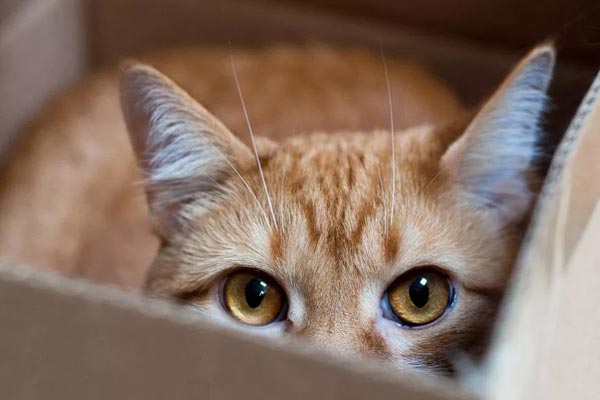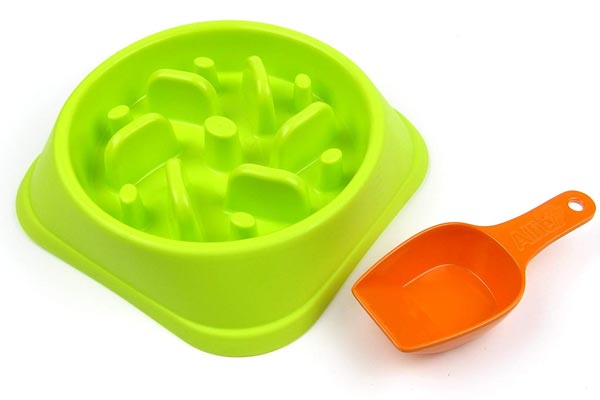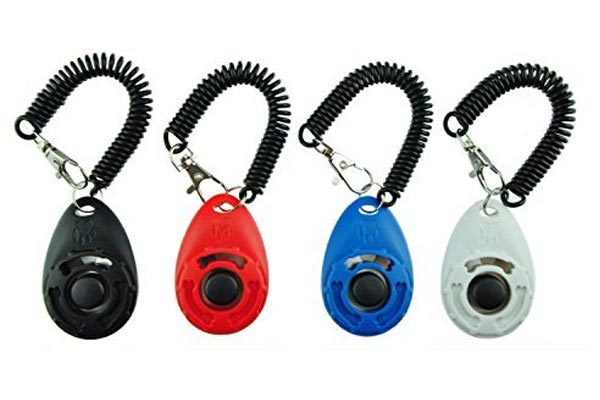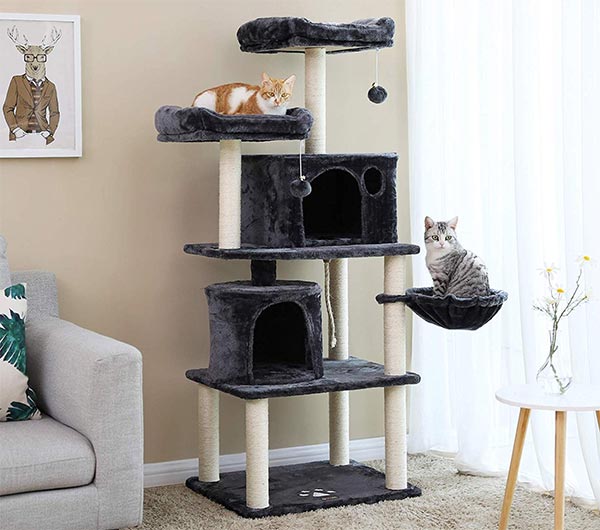
Charting the Successful Course for Cat to Cat Introductions
how to introduce cats and maintain peace? You just might encounter many of the same scenarios when two people meet for the first time that you might when introducing two strange cats to each other.
With people, there can be this silent apprehension and territorial supremacy, even if the only words exchanged are but superficial pleasantries.
Cats, on the other hand, are more direct and do not have words cluttering up their honesty when expressing themselves.
First Impressions Can Certainly become Lasting Ones
Your goal when introducing cats for the first time is in preserving their sense of prominence, and this cannot be underestimated.
For the incumbent kitty, territorialism is powerful and when threatened can result in various negative response behaviors including peeing on the perimeter to mark territory.
For the newcomer, it is like a circus with all new sights and sounds that must be explored and owned.
Why should you follow a process of acclimating your two or more cats to each other that takes into consideration their naturally protective tendencies?
For the simple reason that it is more helpful to the humans if your cat is permitted to think that his acceptance is all his own idea. Essentially, you must let your cat come to accept the newcomer on his own terms.
Allow Your Cat to Trust His Senses and Indulge His Curiosity
The process of introduction has steps to follow that work with your cat’s powerful senses of smell, sight, sound, and possibly taste if the two end up getting that close.
Your incumbent kitty has established a strong sense of ownership and, like the lion king from which all cats have evolved, this territorialism is not abandoned so easily.
By carefully introducing the smells and sounds first, the sight of the new kitty will follow in proper time and fashion.
This is critical for two reasons. First, there is the safety of both animals and the humans involved; second, you want to help preserve the development of a natural acquaintanceship that hopefully blossoms into them being best friends forever.
Conversely, rushing things or not allowing for a natural acclimation can make for enemies that might never find true companionship.
There are some people who contend that just letting the cats work things out for themselves is enough for them to get along.
Practically speaking, this is a very ineffective approach that puts your cats at risk of injury or harm. Defying your cat’s instincts is both disrespectful and inhumane.
Cats are naturally curious and willing to investigate with thorough interest. Your approach in this gradual process of introduction should naturally pique your cat’s curiosity.
Your proof of success comes when the two cats are more interested in each other rather than wanting to drive the other away.
Choose Wisely When Introducing a New Member of the Family
It is not uncommon for cat owners to want to increase their cat population at home and for good reasons.
While cats are known for being independent, single cats do not do very well when left entirely by themselves. Whether it is their human going off to work all day or extended vacations, cats do get lonely.
If you are able to choose the age, sex, and temperament of the new kitty member joining the household, it is best to consider those same aspects of the existing kitty.
If your cat at home is an older animal inclined to live a more sedate life, for example, sleeping on the couch most of the day, then introducing a young, active kitten can be too much excitement for his comfort level.
Try to match their interest and energy levels.
Kittens, while they can be interesting and fun for adult cats, may not find enough of a sense of companionship with an older cat.
It is advisable to get kittens in pairs so that they keep each other occupied while avoiding potential loneliness. This way, the two kittens can spend more of their time happily playing together.
According to the Humane Society, the change to the household from an older cat’s perspective that may never have known the company of other cats can be a real challenge.
A mature cat who has never had to share its territory, its humans, or its possessions with other pets is a tough case.
However, youthful, exuberant young kittens that may have been separated from their mama or siblings just might be overjoyed to have the company of a mature cat.
Following the Steps Will Bring Your Household More Love
As we go through the steps of introducing your new cat to the household, you have a chance to understand the process of easing this new relationship into existence.
Taking your time, preparing in advance, and having the necessary supplies on hand will make you transitioning the household to include a new cat member of the family so much easier.
Finally witnessing the end result of how the companionship of these two animals may enrich all the lives within the household is a priceless payoff.
The Introduction Process Addresses the Needs of the Cats
Household harmony is something that can be adjusted and finely tuned. Whether your kitty has chosen you or you have decided to choose one yourself, the assimilation process can be helped by choosing an animal based on their experience.
The Last Hope Animal Rescue recommends matching personalities and reminds us that spayed and neutered cats have an easier time being integrated.
The proper cat introduction process addresses both the physical and emotional needs of both animals. While the resident cat perceives an intruder, the new edition has just been thrust into hostile territory.
Arranging an environment that encourages a sense of security will help to avoid them resorting to survival mode.
Your first aim is to establish “safe zones” for both cats. After all, this is a life-changing event for the two of them and they will need a safe place to decompress from the stress and anxiety. They are both going to need your isolated attention at first, too.
Setting up a sanctuary space
Start by setting up a sanctuary space for the new cat. You would not want the cat to have free run of the whole house at first anyway as this can be overwhelming.
Cats are more comfortable in their confined spaces, so this can be a separate room where you can keep the new cat enclosed for her own safety.
The Best Friends Animal Society runs the nation’s largest no-kill sanctuary for companion animals helping us recognize the signs of stress to look for when acclimating to a new cat.
If you play with them regularly you will be able to watch them closely enough to see if they are hiding out, showing aggressive behaviors, losing their appetite, or being excessively vocal. A cat that demonstrates these behaviors without relief may need to see a veterinarian.
Prepare the Space by Outfitting it with the Necessary Supplies
Inside this room, it is most helpful for your mutual goal if you are prepared with cat supplies such as her own litter box, food and water, some hideaway spaces, some toys, and a scratching post.
It is very helpful if you brought the cat home in a carrier to keep it in the room with the door open. This gives her a familiar place to find comfort and a sense of safety if things get to be too much.
Timid kitties may become fearful of their exposure to new things. The carrier may be the most useful tool in providing comfort since her scent is there and it can be an anchor for safety.
Keeping the door open encourages her to come out and explore in her own time as she feels more confident.

Always Provide Places where Your Cats Can Safely Hide Away
In this same vein, setting up some hideaway spaces in the form of tunnels or boxes with holes cut out for peeping through or as access holes gives your new cat a means of transiting the space without too much exposure.
If you have ever enjoyed watching a cat navigate their own space in an open yard, they tend to position themselves where they know where all the escape paths are.
While a cat may appear to be calm and pensive, you can be sure they are always at the ready to make a clean getaway.
Creating hiding places or boxes
By creating hiding places or boxes into which your cat can feel she has disappeared, you can avoid her cowering underneath or behind a bed frame or tucked inside a closet behind the suitcase.
This can become an unbreakable habit if your new cat does not have a sense of safety emerging from these protective zones. The less stress there is in the early introduction, the easier it will be to progress and succeed with the process.
Your resident cat is going to be aware that there is someone or something of interest in the other room. By secluding your new cat in a single room, your resident cat is assured that only a small area of his domain has been invaded.
You want your resident cat to become curious about what is on the other side of that door.
That Door Represents Cat Training Time for Both Participants
Since food is such a great motivational tool, mealtime is an excellent arena for getting acquainted. It starts with the barrier of a closed door between them. While this prevents visual access, their other senses will be firing on all cylinders.
Mealtime is the most powerful way to show both cats that good things happen when they are both present. You want to feed them at the same time by placing their own food bowls on either side of the door.
Your cat will show you how close to the door the bowls may be placed for comfort either by enjoying the meal or by avoiding the approach altogether.
If you need to start them at a distance from the door, you can gradually shorten that distance. Hopefully, they are eating at about the same pace.

If one cat is finishing much faster than the other, you can slow them down with a brake bowl designed to make them spend a little more time between gulps.
You do not need to feed them very much during training sessions. It would be better to give them frequent feedings anyway so that you have more “door time.”
With each feeding opportunity, you have the chance to close the gap by bringing the bowls a little closer to the door.
- This set includes a bowl and food scoop. The bowl measures 8 inches diameter and 1.75 inches height. It's best for mid-size dogs like Miniature Schnauzers, Silky Terriers, Cocker Spaniels and Poodles, etc.
- The Slow Eating Dog Bowl’s unique revolutionary design is a result of deep thought and research. The design was borne out of the observation of dogs gobbling up their food every time as if they came right out of a famine. This ‘vacuuming’ of food may result in a myriad of physical and behavioral problems including overeating, vomiting and coprophagy.
- The design in the center of the bowl has several apexes, which serve as an obstruction to deter your dog from making a clean sweep of the food. The same obstruction also makes it more difficult for dogs to get their muzzles near enough to the base of the bowl, and thus preventing them from “inhaling” their food.
- Even your dog doesn't eat fast, The Alfie Pet Slow Eating Dog Bowl can be used as a regular bowl. In fact, the bowl may aid/enhance your dog’s body’s ability to assimilate the nutrients from his food.
- Alfie Pet Food Scoop has a flat bottom allows scoop to set firmly on your counter. The scoop is odor and stain-resistance. Also dishwasher safe. Measures 5.75" x 2.25" - 1/4 cup and 60ml capacity engraved on the scoop. Perfectly sized to measure your pet's meal portions.
According to American Humane, if either cat shows aggressive behaviors such as hissing or growling at each other through the door, this is your indication that you need a lot more time before putting the two cats together.
You must take things slowly and push their food bowls farther apart from the door to give them some breathing room. If this tendency to display great dissatisfaction goes on for days, you just may have an incompatible match.
The Introduction Process by Progression Works One Sense at a Time
As you are working your way to each of your cat’s senses, the next stage is to focus on the scent of the newcomer. While your resident kitty has been able to detect the presence of another creature on the other side of the door, the possibility of the scent permeating beyond this barrier has been limited. Now it is time to turn up the volume.
You have seen your cat rubbing his face on things, even on you if you have achieved the acceptance of the famous head bonk where your foreheads meet. This is your cat showing you he has accepted you into his clan. It is quite a compliment.
When cuddling with your kitty, you are undoubtedly aware of how he loves to rub his face on you and your surroundings.
Whether it’s pillows and blankets, your leg, the handle of your purse, your shoes, anything, and everything is a prime target. A prime target for what, you ask?
Since You Asked, What’re a Few Pheromones Between Friends?
This is your cat-owning his domain. You see, cats emit pheromones, the scent chemicals, from their scent glands.
These glands are located all around the cat’s face including their cheeks where the whiskers grow, around the sides of the mouth, on their chins, and on the beloved forehead.
According to Pamela Johnson-Bennett of Cat Behavior Associates, now is the time to share these pheromones between the two cats before they actually physically meet each other. You can use a cloth, or a sock is even better.
You can put the sock over your hand and let the new kitty rub all over the sock or cloth depositing his or her pheromones all over it.
Then you can deposit the pheromone-coated fabric anywhere in the safety zone where the resident kitty is hanging out.
By doing this, you allow your cat to investigate the new-cat smell on his own terms and in his own time.

If you have any familiarity with clicker training for dogs, you can use one here to encourage your kitty anytime he makes a move for the sock.
Take Advantage of Available Tools to Make Your Job Easier
You can click and reward for anything you want to encourage your cat to repeat while ignoring any negative behaviors.
Since your resident cat is the one you are working with to engage and manage, your clicker training need only be for him through this acquaintance training.
Once again, food being a powerful tool, use treats along with the clicker to establish the sound with the positive behavior by offering a reward each time your cat does well.
Turnabout is fair play, and you can give the new cat a chance to get to know your resident cat the same way. Consider it a stock exchange.
Make it your choice whether to use the clicker with the new kitty or just use treats to encourage the behavior.
Feeding both cats on a schedule is highly recommended in this stage of the process because the cats may show no interest in treats if they have free access to food from free-choice feeding.
Rewards are only effective if the cat is interested just as the pheromone-coated sock is only useful if the cat shows some kind of interest. This attention need not be overt to be a positive result.

It is possible to purchase a multicat calming pheromone diffuser that you can use to help your cats get along and reduce the frictional behavior of hissing, spitting, scratching, and fighting.
- Veterinarian Recommended, #1 Brand in Pet Behavior Management
- Proven 95% effective for reducing urine marking
- Proven 93% effective for limiting destructive scratching
- Creates a calming environment for your cat and will not affect other household pets
- New & improved diffusion system and formula
These are vet-recommended, drug-free solutions that mimic the natural maternal nursing pheromones. This is also a useful calming agent you can use when cats must take a ride in the car.
It is Time to Allow New Cat Smell into Resident Kitty’s Space
As the overseer, you are controlling the degree of exposure while ensuring both cats remain safe without overwhelming their senses.
While the resident kitty is secured elsewhere in the house, allow the new cat to venture into spaces she has yet to explore. This gives her the chance to acclimate to the environment and leave her scent wherever she goes at the same time.
Since both cats have been given a chance to detect the other’s scent, this will not be so alarming to either one of them. You might still have treats and toys at the ready when the resident cat is allowed back into his sanctuary.
You will have to judge if this slight invasion of the unfamiliar cat is too much for the resident comfort.
All of the steps outlined so far may be repeated as many times as necessary to continue with the progressive process of achieving a sense of familiarity between the two cats.
As you have succeeded with each phase, you can move on to the next one, which in this case, is the first opportunity for the two cats to actually see each other.
Turning the Hesitant Peek into a Friendly Game of Footsie
This next stage of introduction calls for cracking the sanctuary door during feeding time. You can start off by only offering tiny amounts of food for short periods of time followed by shutting the door.
This allows both cats to be aware of each other more prominently without feeling threatened.
Keep in mind that each exposure should end on a positive note to anchor the good feelings as opposed to testy fights breaking out.
For your own peace of mind, you can either place two door stops beneath the door to prevent it from fully opening or attach a simple hook-and-eye closure to the door. This will keep one or the other cat from trying to bolt through the door.
You are the judge of how far to expand this open-door process based on how the two cats are getting along.
For happy cats, their curiosity may pique, and you might find them playing with each other, batting at the other’s paws through the crack in the door.
This kind of friendly play is a good sign that you may want to try the fully-opened door phase next.
There really is no formal timetable on how fast each stage progresses or how long you want to stay with one phase of the introduction.
One thing to keep in mind is that you do not want to rush through any of the steps. Taking things at their pace more slowly allows you to gauge your cat’s reactions and go from there.
Advancing to the Next Stage: A Conditional Open-Door Policy
When you are ready to try fully opening the door, you are still going for separate side-by-side feeding. Most people find using one or more baby gates to restrict their ability to hop the gate gives them visibility of each other without any threat.
At this stage, the gate is becoming more of a psychological barrier particularly if they can jump over it even if they do not take the opportunity to do so.
If you are there to close the door should things escalate, you can prevent an altercation that could have the opposite effect of your goal to maintain a friendly acquaintance.
You want to preserve a relaxed eating environment without the two cats feeling any stress from their proximity. By maintaining the separate sides, you won’t end up with a battle for the bowl.
Proceed with the open-door policy, extending the time the two cats are exposed to each other as you go. You can continue to use the clicker for positive reinforcement.
Your cats will come to rely on its sound and associated treats, so this is a good method to continue with.
Extended Interaction Means the Door Gets to Stay Open
If your cats have already enjoyed some slight physical interaction without the fur flying, you can introduce interactive playtime for more positive reinforcement.
Fishing pole toys or a toy attached at either end of a cord where each cat can play with their own toy is another non-threatening way to start bringing them closer together.
The point here is to avoid competitive play to limit or eliminate any intimidation.
Your participation will have each cat playing with their toys with you. Awareness of the other cat may remain a periphery aspect, and this is okay. Your presence is a form of approval if the two of them remain peaceful with each other.
At this stage, you have reached the time when you can concentrate on creating a safe environment where your cats can spend time together.

As they are no longer separated, you can make use of multi-level cat trees with hideaways and perches allowing for the chance to retreat when the play gets going.
- Exclusive Luxury for Cats: Your feline friends need a cozy home of their own to play, take a nap or jump around; this cat house is sure to be their dream-come-true
- All-in-One Relaxing Spot: Double condos with roomy space inside and plush basket offer luxurious napping experience; top perches with raised edge allow your cat rest on its head while watching over the house
- Sisal-Covered Scratching Posts: Reinforced posts are wrapped with natural sisal rope all over the surface to allow nail scratching and promote exercising; this cat tree is the perfect spot for your cats to jump around
- Stability Is Always Priority: Constructed by CARB-certified natural particle boards and strengthened with battens at the bottom to ensure overall stability; anti-toppling fittings are included for double security
- Not Satisfied Yet? FEANDREA provides you with professional customer service both before and after your purchase; don’t wait any longer, add this to your home today!
When cats are permitted to elevate their perspective, they gain a sense of vertical territory that gives them more security when they can survey the environment without a surprise ambush.

Playtime at this stage can include more ways for each cat to divert their attention from one another. Solo playtime is just as important for easing tension and enriching their environment.
Puzzle toys, cat shelves for climbing, and food-dispensing toys all provide the opportunity for one cat to take their attention off the other cat.
- SUPER FUN CAT TOY... Designed to give your cats an incredibly fun maze like experience.
- GREAT EXERCISE FOR YOUR CAT... Keep your cat healthy. She'll spend hours running in and out! Perfect Size 36 x 8 x 8 inches.
- BEAUTIFUL DESIGN AND CONVENIENT STORAGE... When play time is done, your cat tunnel can be secured easily by velcro.
- RELAXING HIDEOUT FOR YOUR PET... Connect your cat tunnel toy maze to the Zen Den And 3 Way Cat Tunnel.
- 100% SATISFACTION GUARANTEE... This cat tunnel is part of the Easyology Pets FUN STUFF line. If you don't absolutely LOVE . This is our iron-clad commitment to you.
Progress Continues to Evolve as Time Goes By
At this point, your cats are enjoying their time together while they still have a sense of their own respective zones. For this reason, it is helpful to maintain separate scratching posts and litter boxes.
Giving your cats the option to avoid crossing paths can be a game changer as they are still learning to get along.
For the same reasons, you should continue to feed them separately. Even when cats are from the same family, they tend to prefer possession of their own food bowl, and your two new roommates may never be comfortable eating from the same food bowl. That’s not a problem for you, especially if you ever have to restrict one cat’s diet.
For your enjoyment, and because the subject cats enjoy the best of care and companionship, here is a YouTube video that shows you the introduction process.
If you are not familiar with Cole and Marmalade, they are two characters who demonstrate endless hours of successful companionship after being properly introduced and nurtured. Take a moment and get some positive endorphins from watching their story.
Resist the Urge to Accelerate the Process for the Good of All
The introduction process can take as few as a couple of hours to as much as six months to accomplish successfully.
Keep this in mind if you find the amount of time it is taking discouraging. Very often, the two that take the longest to get to know each other can end up being the best of buddies eventually.
Going slow through these steps to introducing cats to each other increases the possibilities for success. Of course, you must accommodate your own circumstances with whatever restrictions or limitations you may have.
However, if you default to simply throwing two unacquainted cats together, you may end up with far more problems that have no end down the road.
Cementing the dislike is as easy to achieve with cats as it is with people. Take your lead from whichever cat is the most stressed-out. Following the cues and maintaining the pace that caters to the unhappy cat makes you a happier human.
Ultimately, it is best to remember that you can anchor a negative outcome when allowing the conflict to escalate. If you follow these steps of introducing your two cats, you can achieve the desired outcome.
It all depends on their level of social ability.
Despite all that is said about cats being so independent, they really appreciate the company of another cat over other species of animals. They are willing to share your time and attention. They will do even better if they do not feel threatened by the competition.
Your duty in introducing two cats is to work with their ability to adapt to change. This is not as easy as it would seem, especially when you consider how much cats dislike change. Let’s face it, introducing a new cat to the family is one huge change to the status quo.
The time you spend carefully and systematically acquainting your two cats with each other will pay off in immeasurable ways.
When you see them developing a lifelong bond and relying on each other’s company, you will find peace and happiness observing their nature-loving ways.
Further, you will be rewarded with their mutual appreciation for your presence without the need to compete.

Hi, This is Alexa, and I love cats. This Website is a Complete Journal about how to travel with a cat and other information about Cat Health, Cat Training, Cat Behavior, Cat Foods and more. I hope you find it useful.





